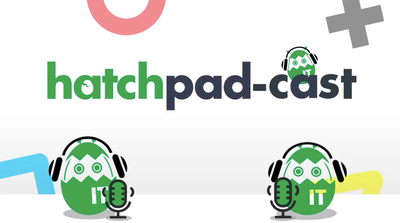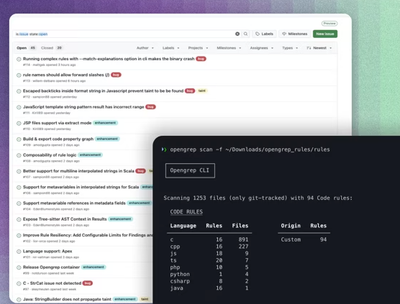
Research
Security News
Lazarus Strikes npm Again with New Wave of Malicious Packages
The Socket Research Team has discovered six new malicious npm packages linked to North Korea’s Lazarus Group, designed to steal credentials and deploy backdoors.
nativescript-push-notifications
Advanced tools
The code for the Push Plugin for NativeScript.
Create a new NativeScript application
tns create MyApp
or use an existing one.
Add the Push Plugin (from NPM). This will install the push plugin in node_module, in the root of the project. When adding a new platform (or using an existing one) the plugin will be added there as well. Go to the application folder and add the push plugin:
tns plugin add nativescript-push-notifications
Go to the application folder and add the Android platform to the application
tns platform add android
Add sample code in app/main-view-model.js in the function HelloWorldModel() like this one to subscribe and receive messages (Enter your google project number in the options of the register method):
var pushPlugin = require("nativescript-push-notifications");
var self = this;
pushPlugin.register({ senderID: '<ENTER_YOUR_PROJECT_NUMBER>' }, function (data){
self.set("message", "" + JSON.stringify(data));
}, function() { });
pushPlugin.onMessageReceived(function callback(data) {
self.set("message", "" + JSON.stringify(data));
});
Attach your phone to the PC, ensure "adb devices" command lists it and run the app on the phone:
tns run android
The access token is written in the console and in the message area, after subscribing (Look for ObtainTokenThread log record). When sending a notification, the message below the TAP button should be changed with the message received.
Edit the package.json file in the root of application, by changing the bundle identifier to match the one from your Push Certificate. For example: "id": "com.telerik.PushNotificationApp"
Go to the application folder and add the iOS platform to the application
tns platform add ios
Add sample code in app/main-view-model.js in the function HelloWorldModel() like this one to subscribe and receive messages (Enter your google project id in the options of the register method):
var pushPlugin = require("nativescript-push-notifications");
var self = this;
var iosSettings = {
badge: true,
sound: true,
alert: true,
interactiveSettings: {
actions: [{
identifier: 'READ_IDENTIFIER',
title: 'Read',
activationMode: "foreground",
destructive: false,
authenticationRequired: true
}, {
identifier: 'CANCEL_IDENTIFIER',
title: 'Cancel',
activationMode: "foreground",
destructive: true,
authenticationRequired: true
}],
categories: [{
identifier: 'READ_CATEGORY',
actionsForDefaultContext: ['READ_IDENTIFIER', 'CANCEL_IDENTIFIER'],
actionsForMinimalContext: ['READ_IDENTIFIER', 'CANCEL_IDENTIFIER']
}]
},
notificationCallbackIOS: function (data) {
self.set("message", "" + JSON.stringify(data));
}
};
pushPlugin.register(iosSettings, function (data) {
self.set("message", "" + JSON.stringify(data));
// Register the interactive settings
if(iosSettings.interactiveSettings) {
pushPlugin.registerUserNotificationSettings(function() {
alert('Successfully registered for interactive push.');
}, function(err) {
alert('Error registering for interactive push: ' + JSON.stringify(err));
});
}
}, function() { });
Run the code
tns run ios
Send notifications
// Get reference to the push plugin module.
var pushPlugin = require('nativescript-push-notifications');
register(settings, successCallback, errorCallback)
var settings = {
// Android settings
senderID: '<ENTER_YOUR_PROJECT_NUMBER>', // Android: Required setting with the sender/project number
notificationCallbackAndroid: function(message, pushNotificationObject) { // Android: Callback to invoke when a new push is received.
alert(JSON.stringify(message));
},
// iOS settings
badge: true, // Enable setting badge through Push Notification
sound: true, // Enable playing a sound
alert: true, // Enable creating a alert
// Callback to invoke, when a push is received on iOS
notificationCallbackIOS: function(message) {
alert(JSON.stringify(message));
}
};
pushPlugin.register(settings,
// Success callback
function(token) {
// if we're on android device we have the onMessageReceived function to subscribe
// for push notifications
if(pushPlugin.onMessageReceived) {
pushPlugin.onMessageReceived(settings.notificationCallbackAndroid);
}
alert('Device registered successfully');
},
// Error Callback
function(error){
alert(error.message);
}
);
unregister(successCallback, errorCallback, settings)
pushPlugin.unregister(
// Success callback
function(){
alert('Device unregistered successfully');
},
// Error Callback
function(error){
alert(error.message);
},
// The settings from the registration phase
settings
);
register(settings, successCallback, errorCallback)
var settings = {
badge: true,
sound: true,
alert: true,
interactiveSettings: {
actions: [{
identifier: 'READ_IDENTIFIER',
title: 'Read',
activationMode: "foreground",
destructive: false,
authenticationRequired: true
}, {
identifier: 'CANCEL_IDENTIFIER',
title: 'Cancel',
activationMode: "foreground",
destructive: true,
authenticationRequired: true
}],
categories: [{
identifier: 'READ_CATEGORY',
actionsForDefaultContext: ['READ_IDENTIFIER', 'CANCEL_IDENTIFIER'],
actionsForMinimalContext: ['READ_IDENTIFIER', 'CANCEL_IDENTIFIER']
}]
},
notificationCallbackIOS: function(message) {
alert(JSON.stringify(message));
}
};
pushPlugin.register(settings,
// Success callback
function(token){
// if we're on android device we have the onMessageReceived function to subscribe
// for push notifications
if(pushPlugin.onMessageReceived) {
pushPlugin.onMessageReceived(settings.notificationCallbackAndroid);
}
// Register the interactive settings
if(settings.interactiveSettings) {
pushPlugin.registerUserNotificationSettings(function() {
alert('Successfully registered for interactive push.');
}, function(err) {
alert('Error registering for interactive push: ' + JSON.stringify(err));
});
}
},
// Error Callback
function(error){
alert(error.message);
}
);
areNotificationsEnabled(callback)
pushPlugin.areNotificationsEnabled(function(areEnabled) {
alert('Are Notifications enabled: ' + areEnabled);
});
onTokenRefresh(callback)
pushPlugin.onTokenRefresh(function(token){
alert(token);
});
In case the application doesn't work as expected. Here are some things you can verify
<activity android:name="com.telerik.pushplugin.PushHandlerActivity"/>
<receiver
android:name="com.google.android.gms.gcm.GcmReceiver"
android:exported="true"
android:permission="com.google.android.c2dm.permission.SEND" >
<intent-filter>
<action android:name="com.google.android.c2dm.intent.RECEIVE" />
<category android:name="com.pushApp.gcm" />
</intent-filter>
</receiver>
<service
android:name="com.telerik.pushplugin.PushPlugin"
android:exported="false" >
<intent-filter>
<action android:name="com.google.android.c2dm.intent.RECEIVE" />
</intent-filter>
</service>
<uses-permission android:name="android.permission.GET_ACCOUNTS" />
<uses-permission android:name="android.permission.WAKE_LOCK" />
<uses-permission android:name="com.google.android.c2dm.permission.RECEIVE" />
In order to use the plugin with Telerik Backend Services take a look at the official sample:
FAQs
Receive push notifications in your NativeScript app on Android and iOS.
The npm package nativescript-push-notifications receives a total of 1 weekly downloads. As such, nativescript-push-notifications popularity was classified as not popular.
We found that nativescript-push-notifications demonstrated a not healthy version release cadence and project activity because the last version was released a year ago. It has 9 open source maintainers collaborating on the project.
Did you know?

Socket for GitHub automatically highlights issues in each pull request and monitors the health of all your open source dependencies. Discover the contents of your packages and block harmful activity before you install or update your dependencies.

Research
Security News
The Socket Research Team has discovered six new malicious npm packages linked to North Korea’s Lazarus Group, designed to steal credentials and deploy backdoors.

Security News
Socket CEO Feross Aboukhadijeh discusses the open web, open source security, and how Socket tackles software supply chain attacks on The Pair Program podcast.

Security News
Opengrep continues building momentum with the alpha release of its Playground tool, demonstrating the project's rapid evolution just two months after its initial launch.